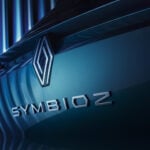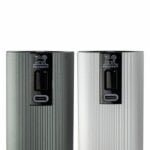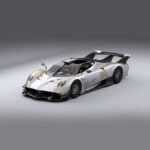Tesla is working with suppliers, including partner Panasonic, on a larger cylindrical battery cell to increase efficiency and reduce costs.
While many established startups and battery manufacturers are working on a revolutionary cell technology that would radically improve the range of electric vehicles while reducing costs, Tesla and its partner Panasonic are advancing with an evolutionary step that could bring significant improvements almost immediately. .
The new Tesla 4680 battery format follows the company’s tradition of using cylindrical cells from mass-market manufacturers such as Panasonic. But the 4680 is different because it has more than five times the volume of the so-called 2170 cell used in most Tesla, as well as structural changes to improve the cost per kilowatt-hour.
The name 4680 comes from its size. The cell is 46 millimeters wide by 80 millimeters high, with a power six times that of 2170 cells, Tesla said. When placed in a battery pack, it will allow a 16 percent gain.
Perhaps even more important in today’s inflationary environment, Tesla promises a larger range at a much lower cost.
During the company’s Battery Day event in September 2020, executives said a 56% reduction in costs per kilowatt-hour by 4680 per volume production is possible.
A real deal
Unlike some of Tesla’s promises, such as self-driving software and Cybertruck pickup, the 4680 cells are real and in limited production, according to the company.
CEO Elon Musk said in a January earnings call that 4,680 cells produced by the California-based electric vehicle’s pilot line are used in some Model Y vehicles manufactured at its new Texas plant, which was opened last week.
Drew Baglino, senior vice president of powertrain and energy engineering, said in a statement that Tesla will increase production of 4,680 cells this year and next, while committing to major suppliers for 4680 external production to meet demand.
“We build 4,680 structural packages every day, which are assembled in vehicles in Texas,” Baglino said. Suppliers, he said, “see things as we see them as a way to generate fundamental cost-effectiveness in production.”
Tesla said in February that it had manufactured 1 million of the 4,680 cells since production began on the pilot line.
Other players
Tesla is not the only one to adopt the 4680 format. Panasonic has said it will produce 4680 cells for Tesla at a factory in Japan. Japanese broadcaster NHK reported in March that Panasonic is also looking for land in the United States to build a battery plant near the Texas Tesla plant.
In addition, some Chinese battery manufacturers have said they will produce 4,680 cells with their own chemistry and production innovations for automakers’ customers.
While Tesla’s nickel-based 4680 cells are likely to find their way into the Cybertruck and Semi truck, given their energy density, the automaker is also stepping up its use of cheaper lithium-iron-phosphate cells from Chinese manufacturers. of batteries such as CATL.
Tesla executives said lithium-iron cells are better suited for use that requires a lower energy density, such as standard-range vehicles.
“When it comes to ‘everything should be 4680, it doesn’t have to be,'” Baglino said in a January revenue call. “Ultimately, it’s about cost competitiveness, scalability and production.”

 Renault’s compact family SUV will be called the Symbioz -.
Renault’s compact family SUV will be called the Symbioz -. Peugeot and its new range of salt and pepper mills -.
Peugeot and its new range of salt and pepper mills -. A new Uber Eats ad is being criticized for showing a peanut allergy -.
A new Uber Eats ad is being criticized for showing a peanut allergy -. Pagani announces new track-based hypercar, known as the Huayra R Evo -.
Pagani announces new track-based hypercar, known as the Huayra R Evo -. Introducing the Oscars in the Best Casting category -.
Introducing the Oscars in the Best Casting category -.